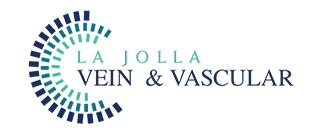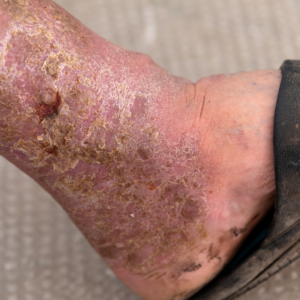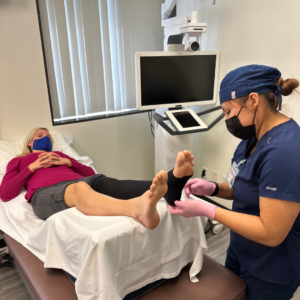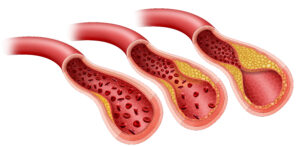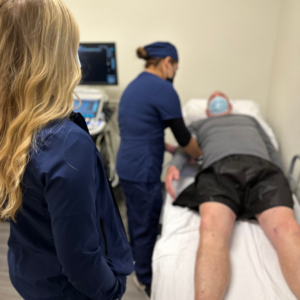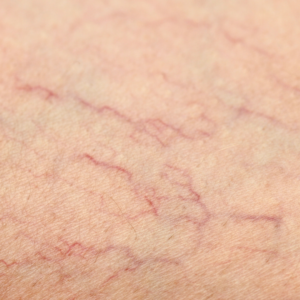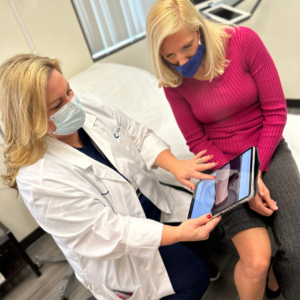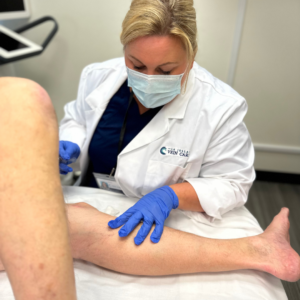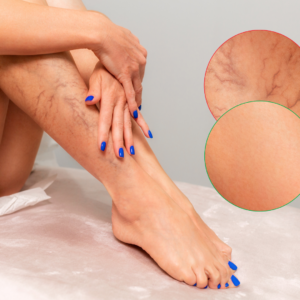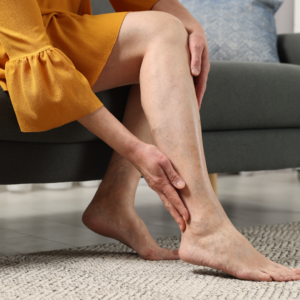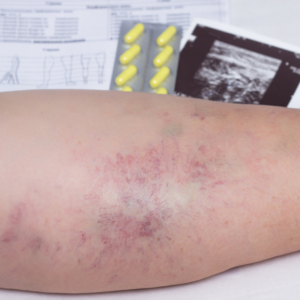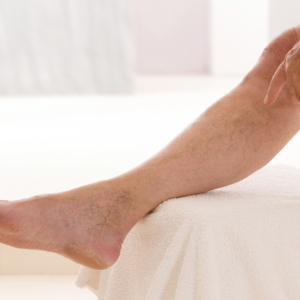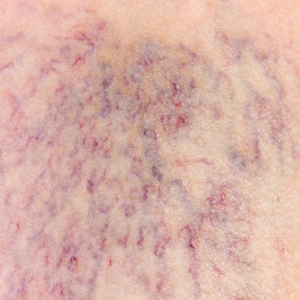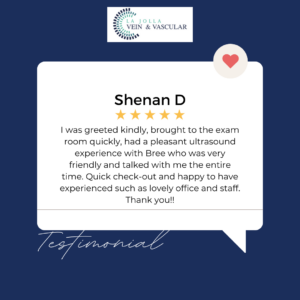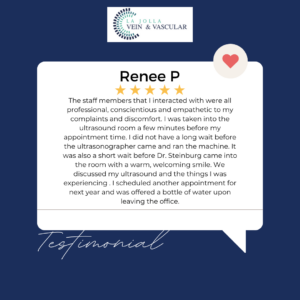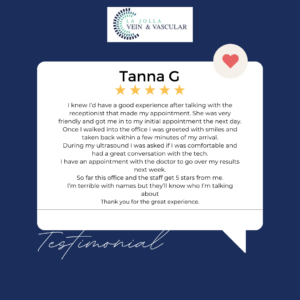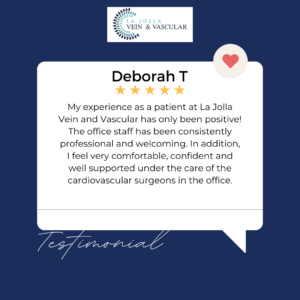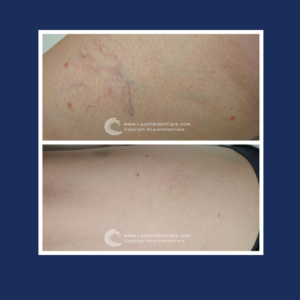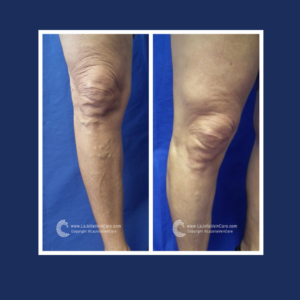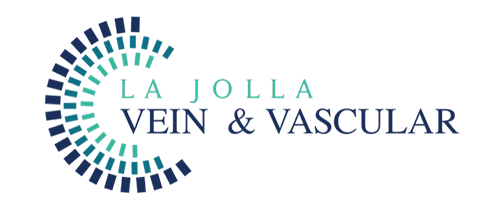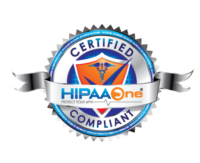Unlocking wellness: Navigating chronic venous insufficiency with expert insights
LJVascular2023-08-30T18:18:41-07:00Unlocking wellness: Navigating chronic venous insufficiency with expert insights
Chronic Venous Insufficiency (CVI) is a medical condition that arises from untreated venous reflux disease. It leads to a range of uncomfortable symptoms and, if left untreated, can cause significant skin changes and complications. In this blog post, we’ll delve into what CVI is, its symptoms.
What is Chronic Venous Insufficiency?

Chronic Venous Insufficiency (CVI) is a chronic inflammatory condition caused by prolonged venous reflux disease. This condition is characterized by a collection of distressing symptoms such as leg swelling, heaviness, fatigue, and the development of varicose veins. However, over time, CVI can progress, leading to inadequate blood circulation in the leg veins and subsequently, visible skin changes. These skin changes, also known as venous stasis, are marked by darkening, dryness, itching, and firmness in the skin around the ankles. In more severe cases, the skin can deteriorate to the point of ulceration, resulting in what is termed a stasis ulcer or venous ulcer.
Venous Stasis Skin Changes Associated with CVI
Several skin changes are associated with venous insufficiency, including:
- Darkening of the skin along the ankles
- Itching and dry skin around the ankles, often referred to as venous eczema
- Development of wounds around the ankles, known as leg ulcers
Understanding Treatment for CVI
While the treatment of CVI cannot reverse the skin changes that have already occurred, it can prevent further deterioration and ulceration. Through addressing the underlying venous reflux, the inflammatory changes can be reduced, leading to potential relief from itchiness and dryness. However, it’s important to note that permanent skin discoloration may persist. The cornerstone of treatment involves correcting the underlying venous reflux.
Managing Venous Leg Ulcers
Leg ulcers, which can result from severe CVI, require a multifaceted approach to healing. Depending on the severity, treatment may involve:
- Correcting the underlying venous reflux
- Referral to a wound care clinic for specialized care
- Implementing compression therapy
To determine the appropriate treatment path, a comprehensive ultrasound examination is necessary. This ultrasound will pinpoint the specific location of the underlying reflux, be it in the saphenous veins, perforator veins, tributaries, or even deep veins.
Chronic Venous Insufficiency is a complex medical condition with far-reaching implications for those affected. By understanding the condition, its symptoms, and the available treatments, individuals can make informed decisions about their health.
“Bringing Experts Together for Unparalleled Vein and Vascular Care”
La Jolla Vein & Vascular (formerly La Jolla Vein Care) is committed to bringing experts together for unparalleled vein and vascular care.
Nisha Bunke, MD, Sarah Lucas, MD, and Amanda Steinberger, MD are specialists who combine their experience and expertise to offer world-class vascular care.
Our accredited center is also a nationally known teaching site and center of excellence.
For more information on treatments and to book a consultation, please give our office a call at 858-550-0330.
For a deeper dive into vein and vascular care, please check out our Youtube Channel at this link, and our website https://ljvascular.com
For more information on varicose veins and eliminating underlying venous insufficiency,
Please follow our social media Instagram Profile and Tik Tok Profile for more fun videos and educational information.
For more blogs and educational content, please check out our clinic’s blog posts!
